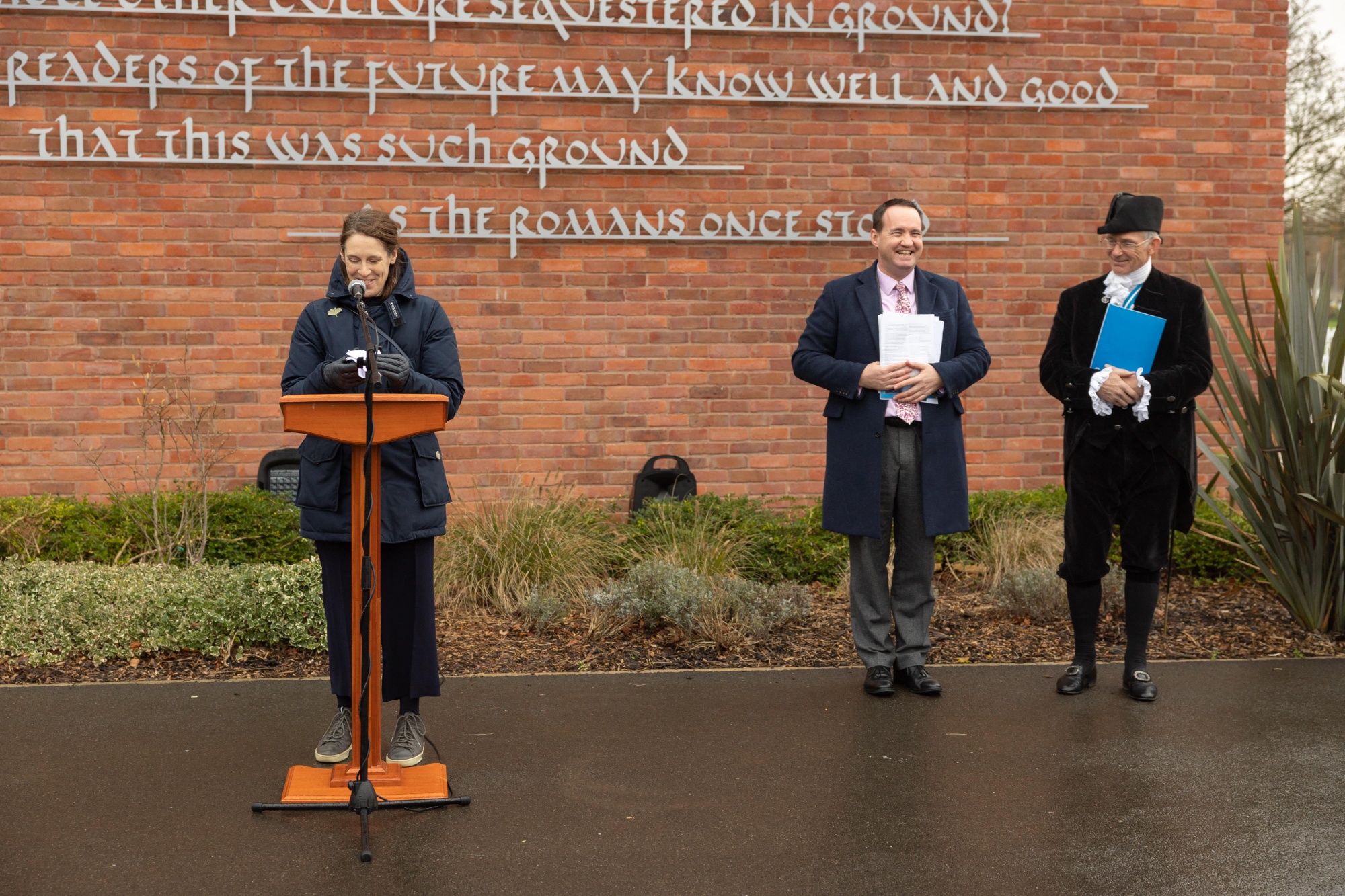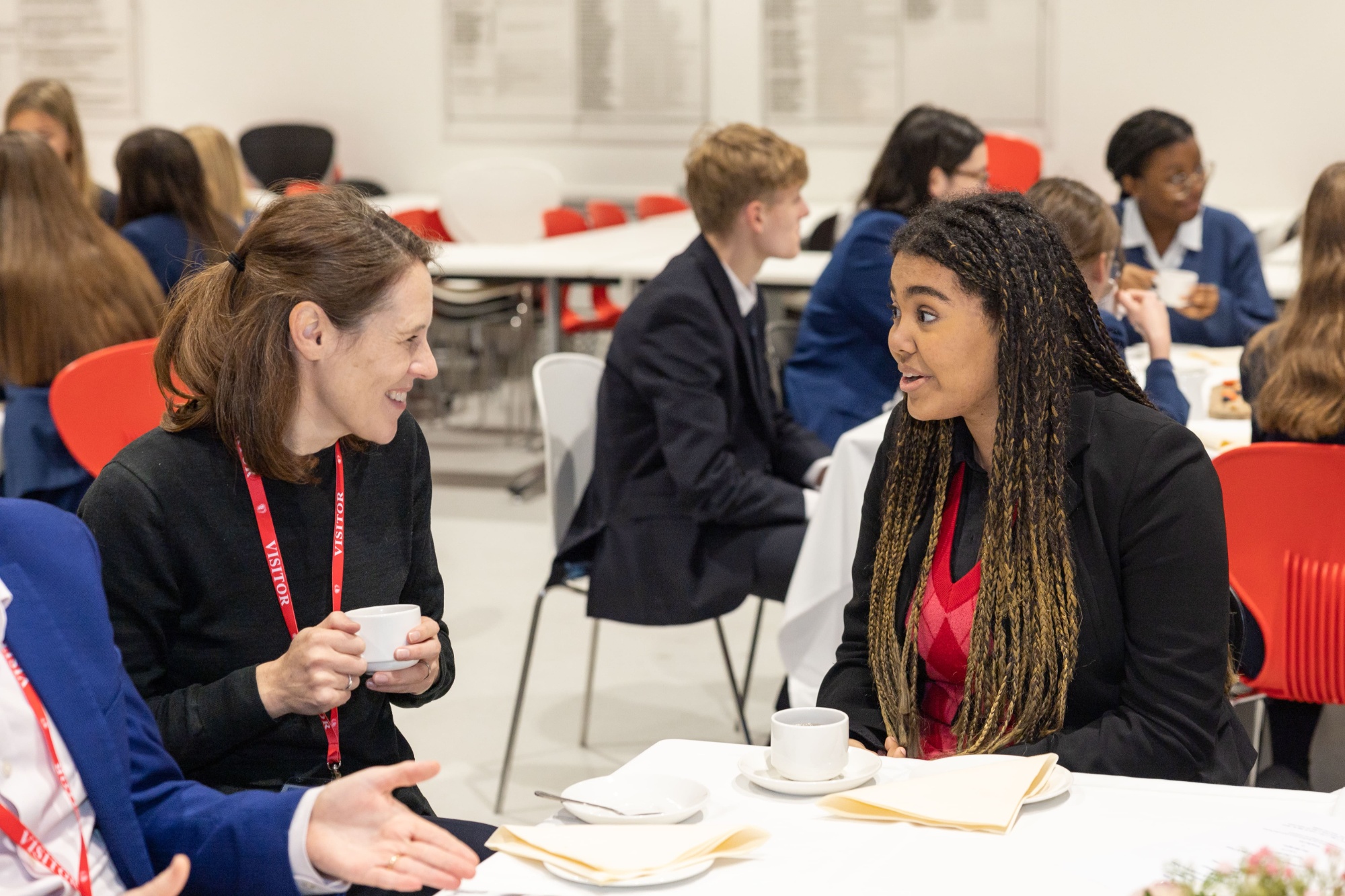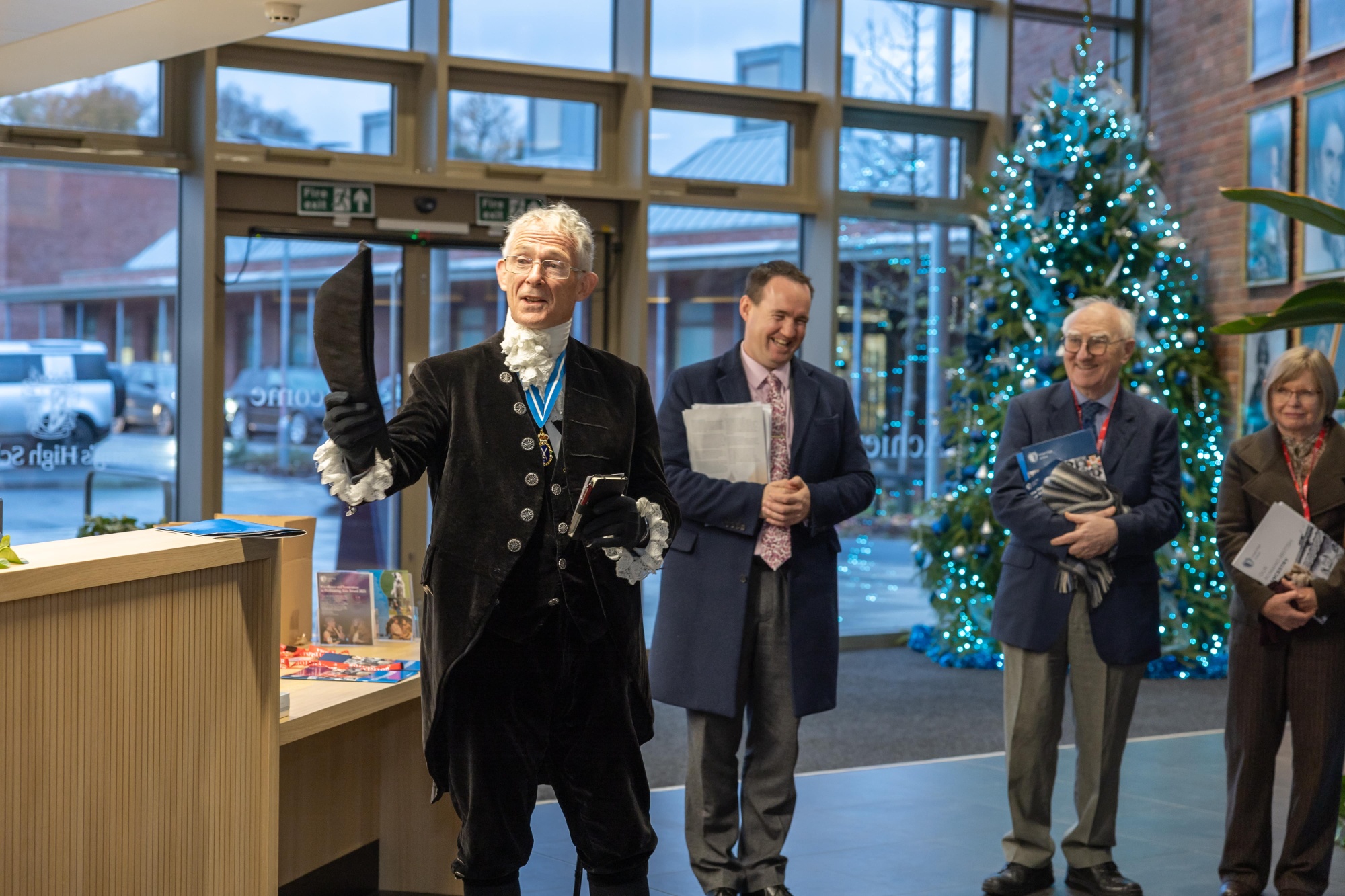King's High School's Roman memorial officially unveiled by The High Sheriff of Warwickshire

On Monday, 5 December, the High Sheriff of Warwickshire, Mr David Kelham, visited King’s High School to officially unveil a Roman memorial dedicated to the ancient remains discovered beneath the school site. After an archaeology session with students from local primary schools, students, staff and guests braved the rain to see the unveiling of the school’s memorial ‘As the Romans.’
In 2018, local archaeologists made the remarkable discovery of a 30ft Roman barn and other artefacts during the construction of King’s High School on the new Banbury Road site. To celebrate the findings, Foundation Principal, Richard Nicholson commissioned a site-specific sculpture by acclaimed artist, Liz Middleton who worked closely with King’s High pupils on this incredibly special project. The Head Master of King’s High School, Dr Stephen Burley says, ‘It was a great pleasure for us to welcome so many guests to King’s High to mark the formal opening of our Roman Memorial. It was a special occasion for us to thank everyone who has contributed to the Roman project, as our students have worked with several leading archaeologists, historians, poets and artists as they have explored the extraordinary discovery of an ancient building on the site of our school.’
Joined by members of the Landor Association and local history groups, Liz Middleton’s wonderful inscription was unveiled by the High Sheriff and Dr Burley. Cast in silver steel in script inspired by tablets from Vindolanda and the archaeological finds uncovered on the school site, the sculpture features an extract from a poem by one of King's High’s Year 12 pupils, Rose. Liz Middleton selected Rose’s poem from the wonderful anthology, ‘A Growing World’, which was produced by Professor Gregory Leadbetter during his poetry residency at King’s High. Rose recalls submitting the poem for the anthology at the time but says, ‘I was as surprised as everyone else when I learned it was going to be put on the school wall!’

The opening ceremony was a fantastic way to honour the ancient site on which King’s High School stands and to recognise the work that went into the project from both Liz Middleton, and King’s High pupils. Liz Middleton outlined the inspiration for her work, accompanied by readings from King’s High pupils, Emma, Ivy and Isabella. The event culminated in the reading of two poems inspired by the discovery of the Roman building - Sediments by Rosie B and As the Romans by Rose. Liz Middleton said, 'What a wonderful occasion it was, typical of what I have come to know of King’s spirit – full of warmth, effort, and lashings of hospitality. The student research and poetry was impressive, and the High Sheriff captured the moment's significance in his generous and inspiring speech. What a privilege it has been to be part of this extraordinary story.’

Following the unveiling, the afternoon saw guests visit a display of the archaeological finds, guided by students who have been investigating the Roman building over the last four years as part of the project led by Mr Grier and the History Department. They then gave a fascinating presentation on the discovery before inviting questions for Caroline Rann of Archaeology Warwickshire and Dr Jerry Evans. The group have also produced a guidebook to the finds, containing four years of investigation, thought and inspiration. Mr Grier stated ‘It was wonderful to see this important archaeological discovery celebrated and to share with guests our thoughts on what was happening on this site almost 2000 years ago. For many of the girls working on the project, this has been many years in the making. We are all delighted that the Roman presence on the site has been commemorated.’

The memorial's official unveiling does not mark the end of this lengthy project however – in fact, it marks the beginning of an important development for the school. In sharing his plans for the future, Dr Burley commented, ‘We are looking forward to sharing more widely across the community our insights into the ancient lives, families and people who inhabited the site on which our school now stands.’
